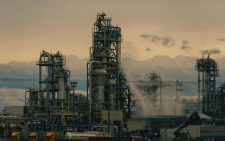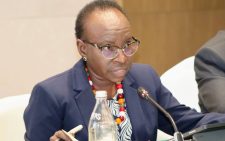How Mboya, India PM created Kenya’s biggest textile factory

One day in 1963, the then Indian High Commissioner to Kenya visited Kericho and spent the night as a guest in my house. As we whiled away the evening, he mentioned to me that he had instructions from the Government of India to help Vijaypat Singhania, chairman of JK Group, one of India’s largest conglomerates, to set up an industry in Kenya.
The company had vast interests in textiles, manufacturing and technology. Many of the companies pursuing these interests were listed on the Indian stock market.
However, Singhania wanted to venture into the textiles business through his private company, the Raymond Group.
The decision to spread Raymond’s imprint to Kenya had come about after Tom Mboya, then a Cabinet minister in the government of President Jomo Kenyatta, visited India where he met Jawaharlal Nehru and asked him to encourage Indian business leaders to invest in Kenya as part of the Kenyatta government’s efforts to create jobs in the newly-independent republic.
Both men used to wear caps and during that meeting, after they had agreed on the bilateral co-operation, the two leaders exchanged their trademark caps.
The iconic photo of that gesture was published in Kenyan newspapers at the time. It was not only a symbol of friendship but also of the leaders’ will-ingness to put their two countries on a path of economic co-operation.
Finding a local partner
As a follow-up to the talks, the Indian High Commissioner to Kenya was directed to find a local partner who would work with Singhania on setting up the Raymonds factory in Kenya.
He asked me if I would be interested in that role and, after considering it and consulting with my brothers, I said that I was. I requested for the project file and after going through it carefully, I was convinced that the idea was worth pursuing, so I gave a firm commitment that I would work with the Indian conglomerate as their local point man.
As a result, the high commissioner, recommended me to Singhania as a suitable local partner.
The undertaking had heavy involvement by both the governments of India and Kenya. On its part, India wanted to protect the investment of its citi-zens while Kenya was seeking to create jobs and encourage industrialisation.
But it was also keen in making the East African Community a success and, as a result, all major investments had to take this into consideration.
In our case, the two governments agreed that the Raymonds factory would be built in Eldoret as it was a central point in the regional bloc, making it easy to distribute goods by road to both Uganda and Tanzania as well as around Kenya.
The then director of industry in Kenya, Matheka Teyie, approved the proposed project and subsequently the minister for Commerce, Mwai Kibaki, gave us the license to commence operations. With the legal framework in place, Singhania led a team from India to assess the suitability of the loca-tion. When they arrived in Nairobi, they were received by Tom Mboya, who then organised a flight for them to Eldoret, where the mayor, Councillor A.N.Oloo, was waiting for them with instructions to help them secure a suitable location for the factory. Indeed, the mayor took them around the bur-geoning municipality and asked them to choose a site that they thought best suited their needs.
Singhania found just the right site near the town centre and next to the Eldoret-Kisumu highway and the mayor ordered that ten acres of land be re-served for the factory. Soon after, a contractor, T.S. Nandhra, was hired to start building the factory premises. The work was expected to be completed in two years and indeed, in 1965, the factory was ready for commissioning.
Soon, the machines roared to life as they started churning out yarn. We had considered that since many parts of Kenya experienced cold weather for much of the year, producing yarn for knitting sweaters would meet an immediate demand in the market. On paper, the idea was unassailable. However, when the yarn reached the market, European women, who were our initial customers, said it was not as good as what they were already buying their supplies from London. They even refused to use it, claiming that it broke easily. The truth, however, was that they simply did not want to use our yarns.
Complaint about firm’s yarn
They filed a complaint with the Ministry of Commerce, alleging that our yarn was sub-standard and should be withdrawn from the market.
Matheka Teyie, who had been co-opted as a director by virtue of his position in government, called a meeting of all directors, myself and Matu Wamae included, to address the complaint.
After much deliberation, we resolved to subject our yarn and other imported varieties to rigorous quality tests. Needless to say, our yarn passed all the tests and indeed, it outperformed imported varieties on some aspects.
During that same meeting, we agreed that for our products to gain acceptance in the Kenya market, we needed a marketing director.
I was assigned that responsibility and we opened an office on Kimathi Street, Nairobi, next door to the Stanley Hotel. As a result, I had to relocate from Kericho and that was how I ended up living in Nairobi.












